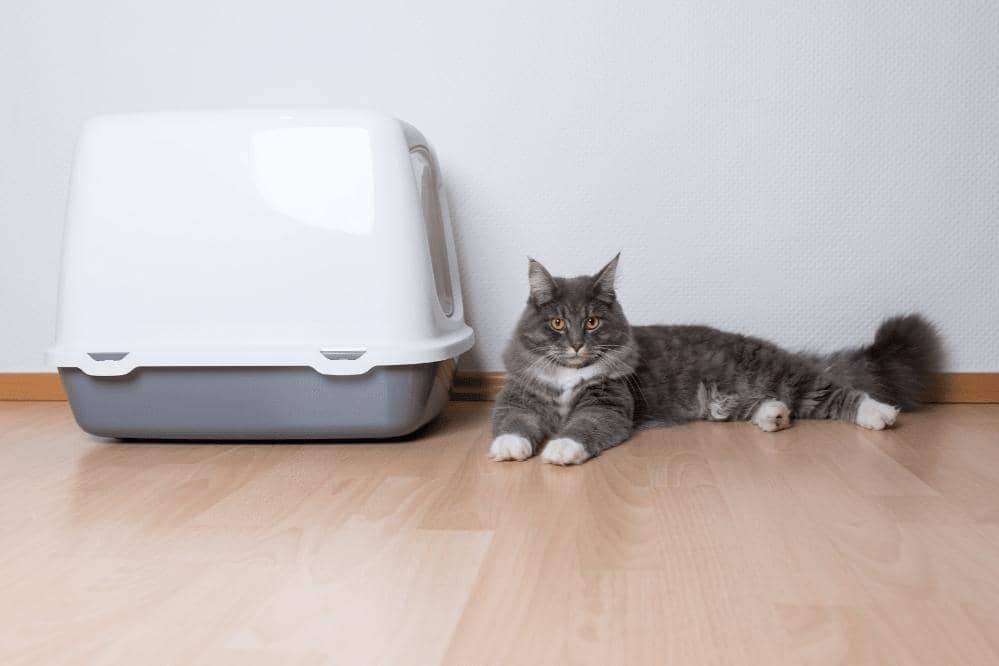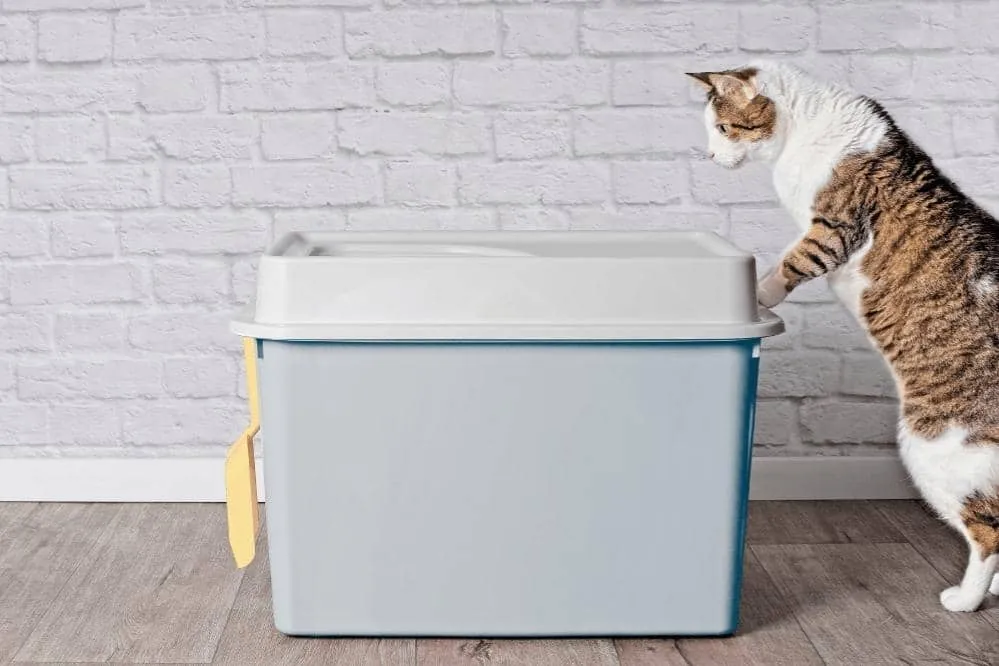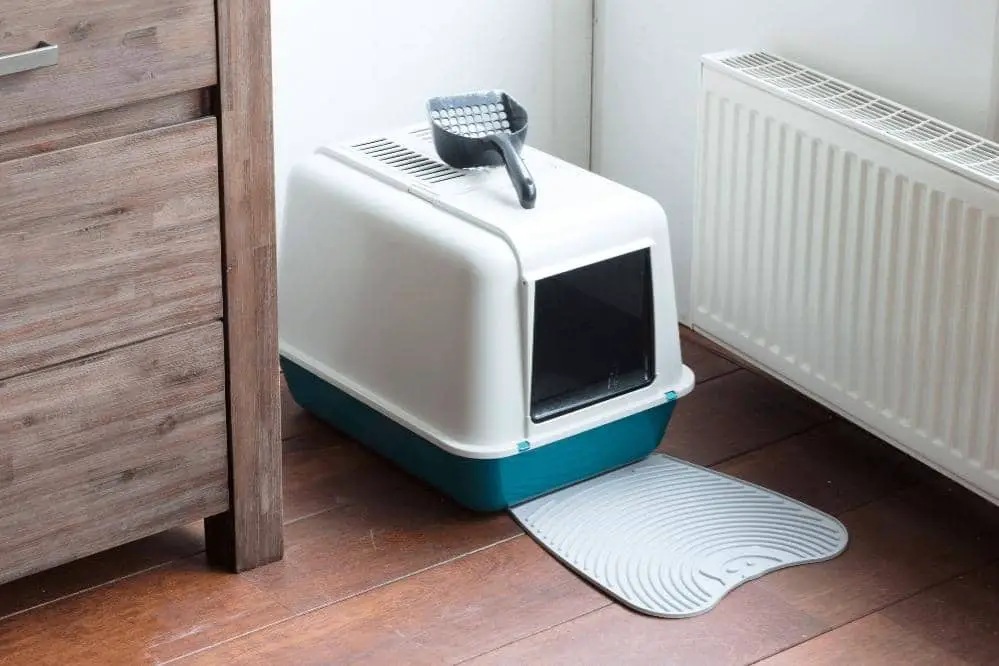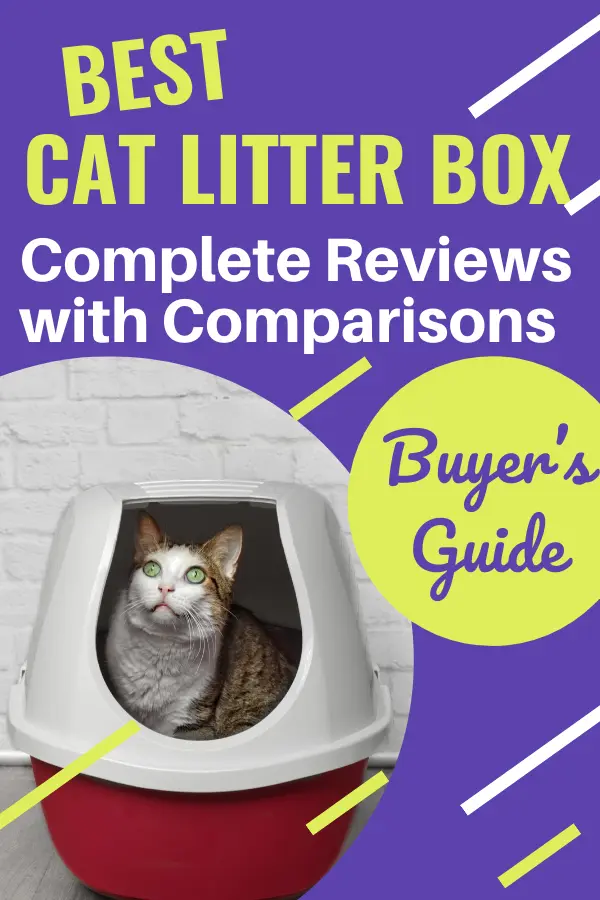Are Cat Litter Boxes Recyclable?

If you are replacing or upgrading your cat litter box, or if you are transitioning to a cat-free household, you may need to recycle old litter boxes. If you are a new cat owner, you may want to start off with an eco-friendly cat litter box, to reduce the environmental impact of your cat litter choices. Either way, let’s look at recycling cat litter boxes and find out the best options.
Recyclable Cat Litter Boxes
Today, there are a lot of options for disposable, recyclable, cat litter boxes. Many of them are even made from recycled material, so you are benefitting the environment in two ways.
These cat litter boxes are typically made out of cardboard or hard paper, and many of them are disposable; they come pre-filled with cat litter, in sets with multiple boxes. The cat uses the recyclable cat litter box for a week, then you recycle it and replace it with a new one the following week.
While these kind of cat litter boxes are biodegradable and recyclable, and often made of recycled materials, they aren’t the most eco-friendly option; using a new litter box every week has a high carbon footprint, as you need to account for the environmental impact of packaging, shipping, and disposing of a litter box every week.
Recycling a Traditional Cat Litter Box
If you have a traditional cat litter box that is made out of hard plastic, so it’s more durable, it may be more difficult to recycle, but it isn’t impossible.
If you have a plastic cat litter box, look it over carefully. On the litter box somewhere (often on the bottom) will be a symbol that indicates what kind of plastic it is. These symbols are usually a number surrounded by a triangle made of arrows. Here is what the numeric codes indicate:
1: PETE polyethylene terephthalate
2: HDPE high-density polyethylene
3: PVC polyvinyl chloride
4: LDPE low-density polyethylene
5: PP polypropylene
6: PS polystyrene
7: Other plastics
With these codes, you can look up your local recycling facilities and determine where the litter box can be recycled. With most of these plastics, you need to take the litter box to the recycling facility, rather than having them picked up at your home. Plastics with the codes 3 and 5 are typically not recyclable in the United States, so avoid that type of plastic when buying a new litter box.
Once you have determined if and where a plastic litter box can be recycled in your community, wash it thoroughly and take it to the recycling center.
Eco-Friendly Cat Litter Box Options
Because your impact on the environment exceeds the limits of your home and your use, it’s important to consider multiple factors when choosing an eco-friendly cat litter box:
Durability/disposability
A disposable litter box may be biodegradable, recyclable, and made of recycled materials, which is great. However, if you are using a new litter box every week, there are other impacts to consider, such as:
- Does every disposable litter box come wrapped in plastic and have a lot of packaging?
- If you are ordering it online, where is it coming from? Consider the energy cost of international shipping and delivery to your door
- If you are buying it in person, consider the energy impact of driving to the store every week. Try to buy in bulk and reduce trips
- If you are buying a new, durable litter box made of plastic, look at the plastic codes and choose a recyclable material before you buy
Eco-friendly litter box liners
If you use a litter box liner to make cleaning and washing a litter box faster and easier, you can choose box liners that are biodegradable and more eco-friendly. Again, consider the wider environmental impact of shipping, transport, and disposal every week.
Eco-friendly cat litter
The greatest environmental impact of a litter box isn’t the box itself, but rather the litter, since a typical cat owner uses so much of it over time. There are some eco-friendly cat litter options, that usually fall into two categories:
Cat litter made of grain
You can find eco-friendly cat litter made of seeds, husks, and other parts of grain crops like wheat, rice, or corn. In many cases, these are the parts of grains that would normally be discarded as waste during the food process, but instead are re-purposed as cat litter. Because they are made of plants, they are usually biodegradable and have a reduced impact on the environment.
Cat litter made of paper products
Many eco-friendly cat litters are pellets or granules made of recycled paper or cardboard. These are also biodegradable, recyclable, and have reduced environmental impact.
Conclusion
With a little thought and planning, you can usually recycle an existing cat litter box, and choose cat litter products that have reduced impact on the environment.



